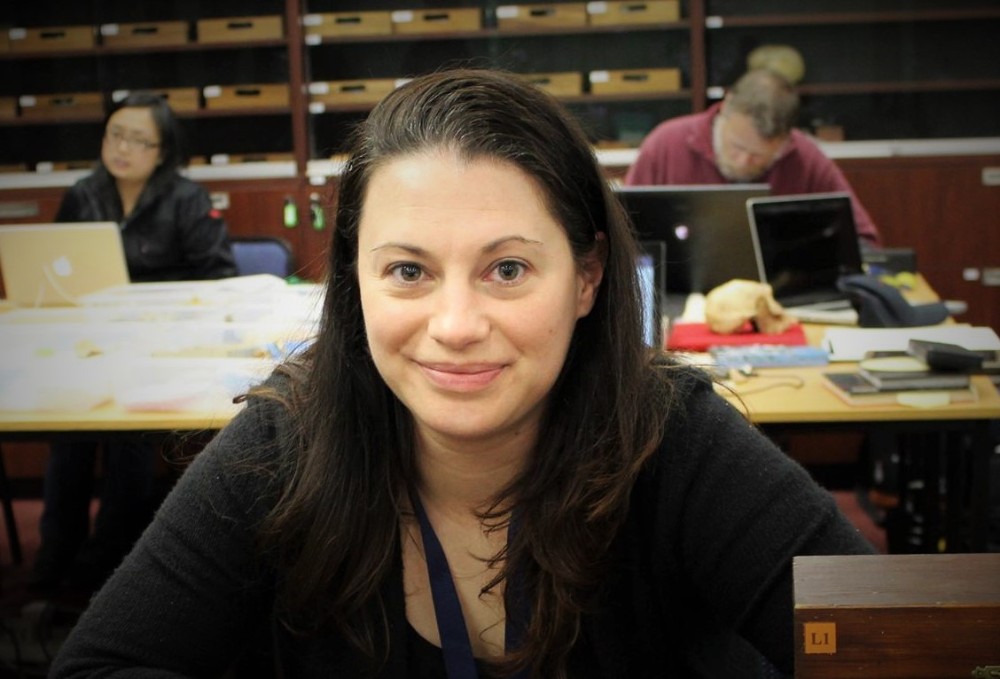SUU Professor Unearths Secrets to “The Dawn of Humanity”
Published: September 16, 2015 | Author: Bailey Bowthorpe | Read Time: 3 minutes
 In May 2015 researchers huddled around tables and bright lights, all busily analyzing 1,500 newly discovered human fossils in Johannesburg, South Africa. Fossils that are said by National Geographic will “add a new branch to the family tree.” Among the handpicked researchers analyzing the historic find was Southern Utah University biology professor Kim Congdon.
In May 2015 researchers huddled around tables and bright lights, all busily analyzing 1,500 newly discovered human fossils in Johannesburg, South Africa. Fossils that are said by National Geographic will “add a new branch to the family tree.” Among the handpicked researchers analyzing the historic find was Southern Utah University biology professor Kim Congdon.
First hearing about the find through an advertisement looking for researchers, Congdon to knew she was stepping into was a significant project that would contribute to new scientific knowledge of human evolution, potentially rewriting human history.
Congdon said the collaborative atmosphere among the researchers during the month of analysis was particularly unique and exciting. “It was a great chance to talk about a fossil as an entire organism, which usually doesn’t happen. Fossil finds are often very isolated,” she explained.
Now, over a year later, the findings of her and her fellow researchers will be published in various academic journals, as well as premiering in a PBS/National Geographic documentary film, titled “Dawn of Humanity”, that tracks the expedition’s progress from the discovering of the fossils in a small South African cave, to the research and analysis of their characteristics, and how these discoveries contribute to scientists understanding of the evolution of humanity.
The PBS/National Geographic documentary debuts September 16 at 10 p.m. on PBS.
“The back of my head is on PBS,” Congdon joked. “The cameras were there the entire time we were working, but I was really focused on getting the analysis done, so I tried to avoid them...although having the film crew there certainly reinforced the significance of what we were doing.”
Congdon said what makes this discovery so exciting is the amount of fossils found in a single expedition, 1,500 fossils (equaling about 15 individuals) all of which have unique characteristics compared to other early human fossils found.
For example, Congdon and three other researchers focused their research on the foot bones, and through her analysis her and the team discovered that this species could stand upright, much like humans do today, a conclusion hotly debated amongst scientist. Analysis of the foot bones also suggest that while it could walk upright, it was also climbed very well — a trait, Congdon explained, is unusual for what scientists know about early humans.
“The traits that we consider to be the hallmarks of humanity did not necessarily appear in the order we thought they did,” she said, speaking of the findings. “What it means to be human is perhaps a little more mysterious and complex than what we originally thought.”
Uncommon for fossil studies of this magnitude, the lead scientists on this expedition focused on involving young and early career scientists, believing the more smart people you can get together, the better the end result. They also emphasized being open and transparent with the findings, which is why all of the fossil scans, research and analysis will be available through open access sources.
“I think it’s a great step forward for the field because we are making great efforts to be transparent, open and collaborative with the work,” she said.
Congdon, who just began her second year as an SUU professor, said this and other research she participates in allows her to remain engaged in the field of anthropology and evolutionary biology.
“It’s hard to be an effective teacher and walk into your class bored, with no excitement for what you do,” she said. “I teach anatomy and evolutionary biology, which allows me to draw on my personal experience and excitement...students recognize that you are sharing a part of your world and your interest with them, not just writing a test.”Photo credit: National Geographic
Contact Information:
435-586-5400
Contact the Office of Marketing Communication
This article was published more than 3 years ago and might contain outdated information or broken links. As a result, its accuracy cannot be guaranteed.

